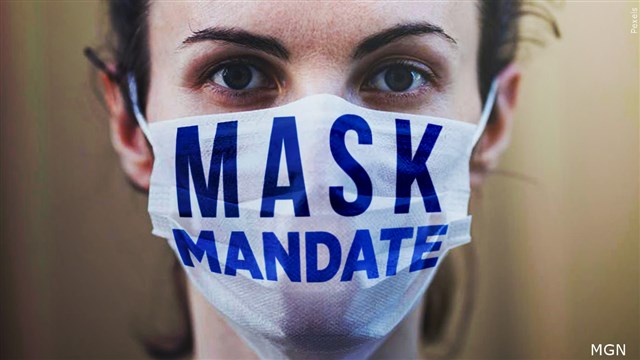Oregon Drops Outdoor Mask Mandate; Test To Stay Now Implemented For Oregon Schools

PORTLAND, Ore. (AP) – As COVID-19 cases in Oregon continue to decrease, health officials announced they are immediately lifting statewide mask wearing requirements in crowded settings.
Oregon was the first state in the U.S. to reimplement an outdoor mask mandate for both vaccinated and unvaccinated residents in August as the delta variant spread.
At the time, Oregon was in the midst of its worst surge during the pandemic.
Record daily COVID-19 cases were set day after day and hospitalizations overwhelmed the health system – a majority of people hospitalized were unvaccinated – with less than 40 intensive care unit beds available statewide.
Dr. Dean Sidelinger, Oregon’s state health officer, said: “While it’s too soon to lift all mask precautions, we can remove the outdoor mask requirement for crowded public settings. We’re not seeing these settings fueling large outbreaks. Oregonians can interact with others outdoors without putting themselves and others at high risk, especially if they are vaccinated.”
Meanwhile, the Oregon Department of Education has implemented a Test-To-Stay program.
“We know the critical importance that school attendance has on student success,” ODE Director Colt Gill said. “Using test to stay as part of a layered set of protocols in schools will keep students and educators in classrooms, maximizing days spent in school learning, growing and thriving. It’s important to remember that if an individual is vaccinated and exposed to COVID-19, they do not have to take a COVID-19 test to stay in school or quarantine.”
How Test to Stay Works
- Test to stay is available only for unvaccinated asymptomatic individuals who were exposed in indoor and outdoor school settings where universal masking is fully in place. Indoors and outdoor exposures are reviewed for proximity and duration of exposure. Test to stay may not be used following extracurricular exposures because masking in these settings is optional and the risk of transmission within the cohort is greater. Similarly, test to stay may not be used following community or in-home exposures.
- Test to stay allows unvaccinated individuals to be tested twice during the 7 days following exposure. First, as soon as the exposure has been identified, with a second test occurring between days 5-7 following the exposure.
- Test to stay is a form of modified quarantine, which allows individuals to attend school during their 7-day quarantine period. However, individuals participating in test to stay are expected to maintain quarantine outside of classroom settings.
- Students and staff participating in test to stay may participate in school-related extracurricular activities during their 7-day quarantine period but must wear face coverings at all times during these activities.



